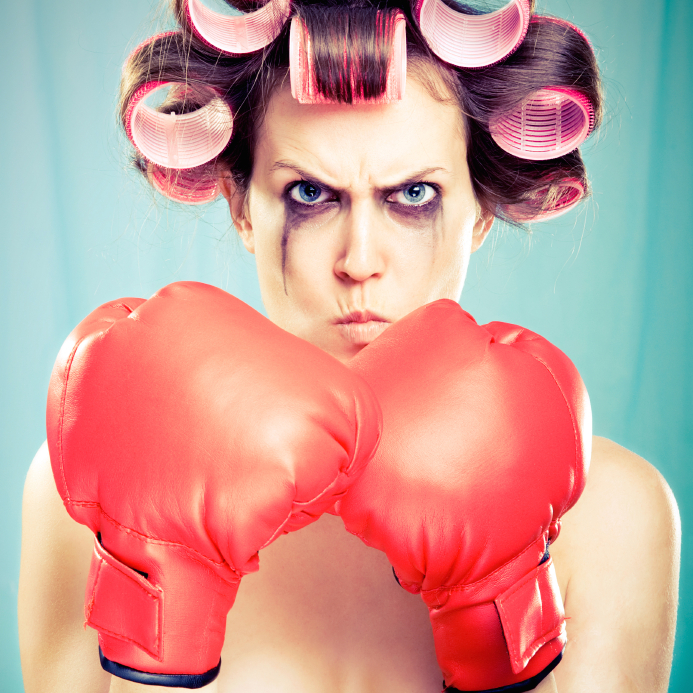40 per cent of us experience regular Premenstrual Syndrome and for one in 20 it can stop us living our normal lives. But there are ways to prevent PMS available to you right now, says Rick Hay
Breast tenderness, cramps, insomnia, irritability, cravings, headaches, anxiety, loss of libido…you know the story. But studies have shown you can treat the symptoms of PMS naturally with a combination of dietary changes, supplements and herbs. Here’s how.

When you combine these with some simple dietary changes you may be surprised how quickly many, if not all of your symptoms can abate.
I have successfully treated many women over the years with this protocol
1. TAKE MAGNESIUM
Firstly, if you suffer with PMS try taking Magnesium Citrate daily (not Magenesuim Oxide though as this can cause loose bowels). This will relieve stress levels and anxiety as well as help with headaches and muscle cramping. Studies have shown that women taking 400mg of magnesium daily show reduced nervous tension, breast pain, weight gain, sugar cravings, dizziness and headaches associated with PMS.

2. GET YOUR B VITAMINS
Taking a natural B Complex with your magnesium can further reduce symptoms especially if you regularly feel down, anxious or lacking in energy. B vitamins are those our body uses up up stressful times so if you lead a busy pressurised life, keep your stores up so your body has more to use pre-period.
It also helps to eat your B vitamins. One study, published in the American Journal of Clinical Nutrition found that eating plenty of B-Complex vitamin rich food can help lower your risk of developing PMS by around 35 per cent. These include thiamine found in fish, pork, nuts and seeds, riboflavin found in cheese, almonds, beef, lamb and oily fish, niacin found in brown rice, peanuts and tuna, vitamin B-6 found in sunflower seeds, pistachio nuts, turkey and chicken, folate found in dark green leafy vegetables, nuts, beans, peas eggs and seafood and vitamin B-12 found in lean beef, low fat diary and fortified soy and cereal products.
The best news is that you only need to change or add a few things – and the results can be come pretty quickly too.
3. TRY THE HERB AGNUS CASTUS
Agnus Castus is one of the most effective and well researched herbs for the natural relief of PMS. It is used to treat menstrual irregularities associated with both the physical and emotional symptoms. One study published in the journal Advanced Therapies on Japanese patients from 2014 found it dramatically improved irritability, depressed mood, anger, headache, bloating, breast fullness, skin issues, fatigue, drowsiness, and sleeplessness associated with PMS and results were especially good if it was continued for three cycles.
4. REDUCE INFLAMMATORY FOODS IN YOUR DIET
For the two weeks leading up to your period, try and reduce the levels of inflammatory foods in your diet. Inflammation is the body’s immune system reacting to perceived stimuli and foods that can exacerbate this pre-period include sugar (yes, that chocolate you crave pre-period isn’t helping your PMS), caffeine, processed foods – especially processed meat, deep fried foods, soft drinks and fruit juices. Cut down on grains like wheat and dairy foods as these can cause inflammation if you are sensitive to them.
5. EAT SOME KALE
Oh, that trusted – if a little over-hyped – green superfood kale really is a powerhouse when it comes to helping you ward off PMS. Kale is one of the best plant-based sources of calcium, an essential nutrient all the time, but especially needed pre-period. You can eat it raw as a substitute for iceberg lettuce in salads or throw it into a smoothie with some almond milk, peanut butter, ice cubes and a pear for a delicious breakfast (you can’t taste the kale!).
6. TRY CHLORELLA
One of the reasons some women get more PMS than others is down to liver function. The liver is responsible for detoxing excess hormones from our systems and if yours isn’t functioning well, you may suffer with an excess of oestrogen and progesterone pre-period. Taking chlorella – a type of algae that grows in fresh water – may help with liver detoxification. Though they’re mostly done in animals, studies have confirmed this. I like Synergy Natural 100g Organic Chlorella Powder £11.85 – take a teaspoon a day in a smoothie or juice.

7. GET YOUR OMEGAS

A 2013 study double-blind placebo-controlled study on 184 women published in the journal Complementary Therapy Medicine found that taking 2000mg of omega-3 fatty acids for 45 days reduced the psychiatric symptoms of PMS including depression, nervousness, anxiety, and lack of concentration as well as the more physical symptoms such as bloating, headache and breast tenderness.
Though it’s not certain how this works, it may be that omega fatty acids affect certain hormones and neurotransmitters like serotonin and dopamine which affect your experience of the mental effects of PMS. They may also work by affecting the sensitivity of various tissues to the female hormone prolactin, which has been linked to PMS.
Take 3000 mgs of anti inflammatory Fish Oil daily – 1000mg with each meal. If you’re a vegetarian like me, you can take Algal Oil which is fish free but still contains the all important DHA and EPA elements of omega-3s that your body needs. A good formula is Efamol Enviromega Fish Free Brain Capsules – (Pack of 60) of which you have to take 3 capsules a day.
MORE: The Healthy Fat Guide
Rick Hay is a TV Nutritionist and Health & Fitness Expert at Ideal World TV and Healthista’s Superfoodist blogger. Follow him on Twitter @nutritionalphys
Like this article? Sign up to our newsletter to get more articles like this delivered straight to your inbox.























































